Hola Amigas y Amigos! Welcome to this, our fourth instalment of our Beginner’s Guide to Mexican Food series! Our subject of the day is Carne Asada – Mexican grilled beef – an iconic dish in its own accord, but certainly also the perfect filling for traditional Mexican dishes like tacos or burritos.

Behold, Carne Asada: Spicy, marinated beef, grilled to perfection – looks good even before it’s done,right?
So far in these guides, we’ve mainly tackled essential and authenticMexican sauces like Salsa Roja, Salsa Verde and Guacamole, but it’s time now for something a little more substantial – a traditional meat dish that is not only fundamental to Mexican cuisine in general, but to my understanding of Mexican food in particular.
Food Memories: Carne Asada
I had my first brush with truly authentic Mexican food at the fringe of Los Angeles’ iconic Olvera Street. “What should I get that’s authentic,” I asked my gracious host and guide, a local school teacher of Latin American origin as we sat down for lunch in a cacophony of Spanish chatter and live mariachi music. His face wrinkled in thought for a fraction of a second before delivering the answer: “Carne Asada! Nothing is more traditional than Carne Asada!”
“Carne… What?” I ventured as I excitedly placed my order to the tune of pots and pans clanging in the kitchen. What eventually arrived for me were perfectly fresh corn tortillas stuffed with avocado, spicy salsa and tender strips of fatty skirt steak so well-seasoned, so incredibly juicy and so perfectly grilled that to this day, almost 15 years later, they remain vibrant in my memory:
Intensely beefy juicy slices of meat slathered in a deeply aromatic and perfectly spicy blend of chili peppers with distinct earthy and herbal undertones of cumin and oregano, a light sweetness and a sour kiss of fresh lime juice and ripe oranges. All of which had been caramelized, nay charred, onto the surface of the meat from what I imagined must have been a blast of hellish high heat… In other words: Spicy, perfectly balanced Latin American perfection!
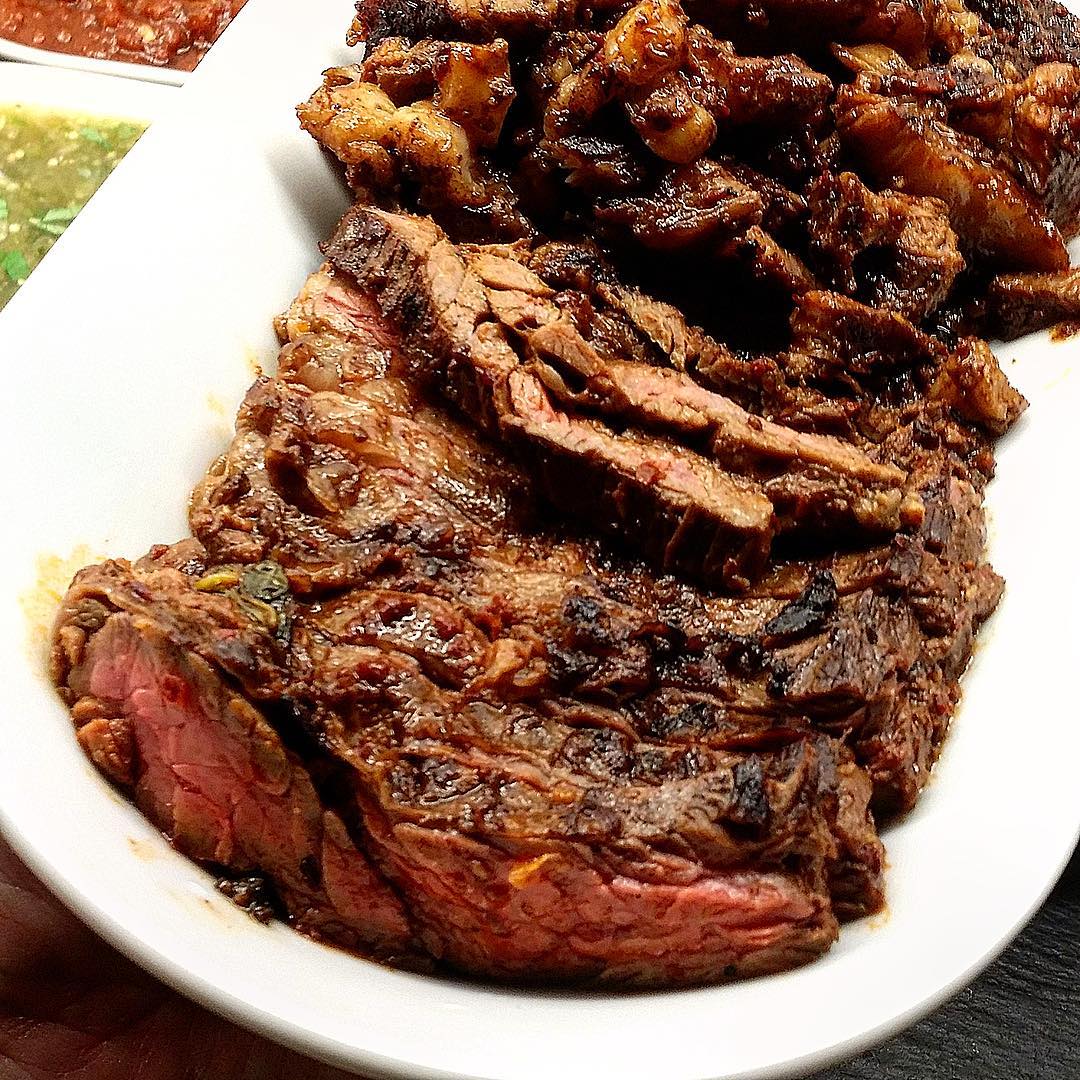
Grilled Carne Asada – Juicy, tender, succulent and spicy – what’s not to love? Photo credit: Malou Rotvel Pagh, Klidmoster.dk
If this is typically Mexican, I reasoned, I’ve got to figure out how to cook Mexican food! And just like that, the experience set me on a decade-long culinary quest to recreate perfect Carne Asada as I experienced it that sunny November afternoon in LA. A quest that has now resulted in this article in which you can learn to make perfect, authentic Carne Asada at home – in a significantly shorter time span than the decade it took me!
In a hurry? Grab the recipe here! No time for back stories and chemistry lessons? Click here to jump directly to our perfect Carne Asada recipe.
But first, in case you’re currently as bewildered, as I was, when I ordered my first portion of Carne Asada, let’s answer what must be your most pressing question:
The basics: What on earth is Carne Asada?
What exactly is Carne Asada? Well, at the risk of making things even broader and more confusing than they currently are, the definition of Carne Asada is about as ambiguous as the definition of meat itself: it literally means grilled meat! From the Spanish carne – meat, asada – grilled! There you go,simple, right!? Okay, perhaps not really.
If we’re to narrow it down a bit, luckily over the years, a sort of consensus has been reached on a Carne Asada standard definition: Carne Asada can now generally be taken to mean inexpensive yet extremely flavorful pieces of beef from the flank, plate or bottom sirloin section of the steer, seasoned well then grilled over scorching high heat to a beautifully caramelized and charred outside while maintaining a perfectly juicy, medium-rare center.
Sliced thinly, Carne Asada can be enjoyed on its own with various sides, but is often used as a key ingredient in other traditional Mexican dishes such as burritos (Mission-style Carne Asada burritos are a famous San Francisco staple) or the best damn tacos you will ever have.
Sounds awesome, I know, so how do we make some? Great question, gang! Aside from being a rather ambiguously named dish, Carne Asada, as is the case of most other authentic dishes, has no distinct, codified recipe but rather thousands of regional variations all of which may or may not have several things in common. The only aspect that all family and restaurant recipes seem to share is that after some sort of seasoning has been applied, the end results are either grilled or seared over very high heat in a cast iron pan or similar. How people arrive at this final step differs widely: Some chefs season simply with salt and pepper, others apply custom dry rubs while some again, the clever ones, employ intricate marinades using a host of more or less authentically Mexican ingredients.
How to make Carne Asada: Three steps to grilled beef perfection
Which path do we follow to Carne Asada nirvana then? The smart one, of course, the way of the marinade! In my mind, a good, intensely flavored marinade is absolutely essential to Carne Asada for reasons that shall soon become obvious. Therefore, in this guide, we will touch upon three important steps to make perfect Carne Asada:
- The best meat for Carne Asada
- Benefits and ingredients of a Carne Asada Marinade
- The proper way of grilling (and slicing) Carne Asada
…of which our primary focus will be on creating the right flavors and textures through an expertly engineered marinade, but not before having first found the perfect meat for the job. Sounds legit? Alright, let’s go!
What are the traditional meat cuts for Carne Asada?
While the name Carne Asada, grilled meat, suggests that any old cut of meat can be used for the purpose of our quest, in Latin- and Southern American cultures, meat usually translates into beef and Carne Asada specifically translates into three distinct cuts.
The traditional cuts for Carne Asada all come from the belly of the beast, or in culinary terms either the flank, plate or bottom sirloin regions. Quite specifically, the cuts usually chosen for Carne Asada are either skirt steak, flank steak or flap meat, all of which have a few important characteristics in common: They’re thin cuts that grill quickly, they’re surprisingly full of primal, beefy flavors and, perhaps most importantly, they’re inexpensive – or at least they used to be in the days when everybody focused on fancier, more tender cuts like filet, ribeye or tenderloin.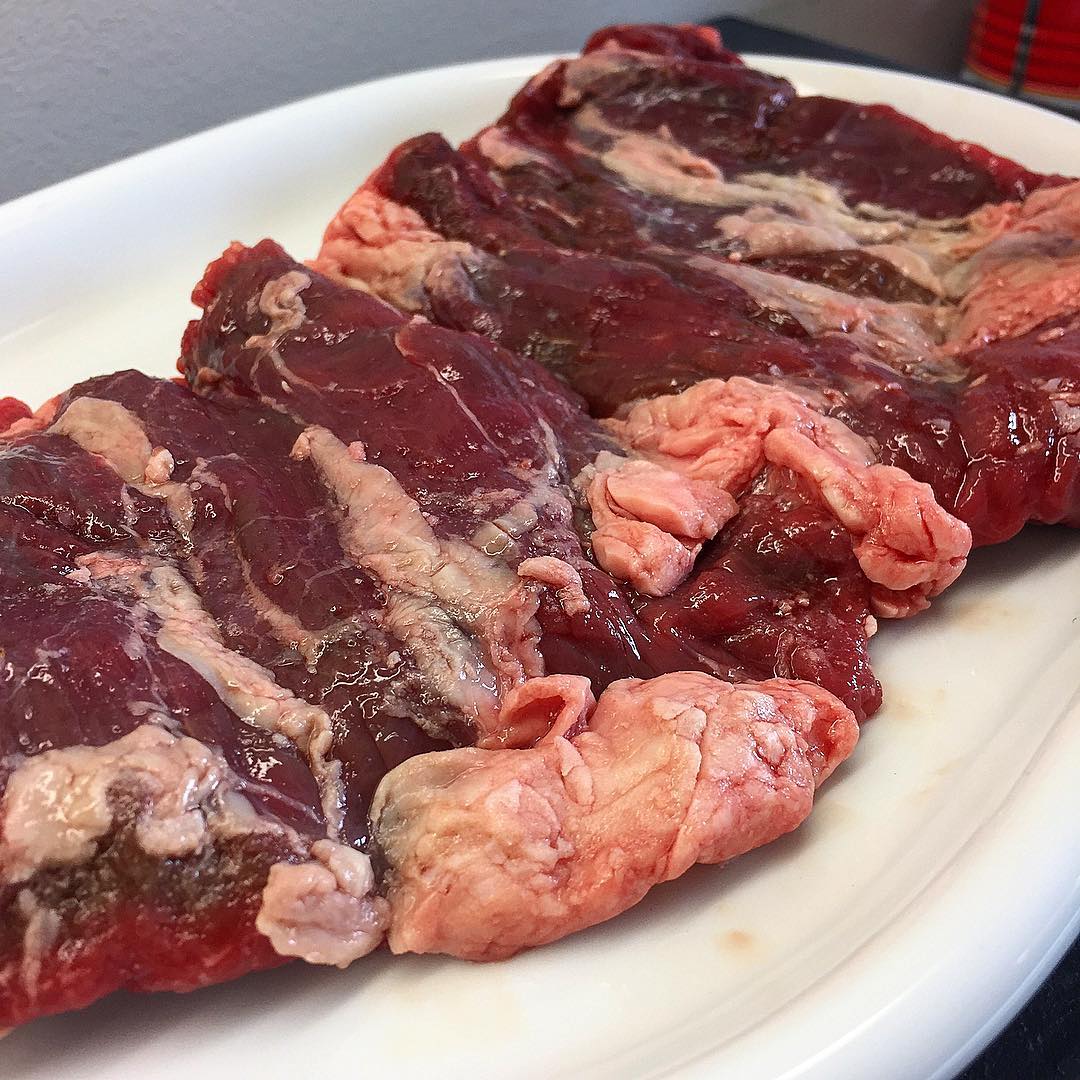
This is flap meat, one popular cut for Carne Asada – it shares one common trait with the three others. It’s not very pretty. But it will be, it will be!
So, with three great options to choose from, what are the subtle differences? And which should you choose?
Skirt steak is a thin, inexpensive, loosely textured cut of beef from the plate region of the animal packed with marbling and great flavor. It grills extremely quickly and is best served medium rare to rare at which point it retains tons of moisture and flavor. For these very reasons alone, coupled with its low price, it’s probably the most traditional hunk of beef for Carne Asada and a great choice provided you can get your hands on it. For some reason, skirt steak seems to be a cut most commonly sold and served in the Americas while in other parts of the world, the request may well be met with a slight look of bewilderment from your local butcher. Luckily, we have great and far more common alternatives like its slightly chunkier but lovable cousin flank steak.
Too fatty for some? For many, skirt steak is the ultimate cut for Carne Asada, but unlike the other options mentioned here, it can be a rather fatty cut. As much as fat equals flavor and texture it gets a little too much for some. If you’re looking for a leaner alternative, go for one of the other options listed below.
Flank steak, unlike skirt steak, is a much more globally recognized and readily available cut and a very worthwhile substitute. Hailing from the appropriately named flank region, flank steak – when compared with skirt steak – is usually a little thicker in size, much leaner in terms of fat and marbling and somewhat denser in texture. As a result, flank steak has a tendency to cook up a little firmer and slightly less juicy than it’s posher alternative and for these obvious reason, many chefs will recommend skirt steak over flank steak any day of the week. However, as fate would have it, for many of us, flank steak may be the only available option and if so, fear not: it’s still a great piece of beef with superb flavor and intensity. Also, being a considerably denser and thicker cut, flank steak is actually a little more forgiving than skirt steak during the marination and grilling process so if only we treat our flank steak well during the entire cooking process, I promise we can achieve results comparable to those of skirt steak.
That leaves us with our last and perhaps least known alternative:
Flap Meat: Hailing from the bottom sirloin section, flap meat is visually quite similar to skirt steak. For these very reasons, some people get the cuts confused or even use them interchangeably. Shame, really, as flap meat has its own signature intense, rich and beefy taste comparable to those skirt steak, while actually being quite a bit leaner. However, unlike our other lean alternative, flank steak, flap meat has a coarse surface texture that seems custom-made for clinging to marinade and chars up well during cooking and despite its lean appearance, it cooks up juicy and full of flavor. Flap meat doesn’t have the signature rich, buttery fattiness of skirt steak, but to some that’s actually a plus.
Which should you choose? Well, if we’re going to go full on Mexican on things, we’ve but one choice: skirt steak! Having had the luxury of trying all three, though, I would personally say that the meaty, juicy and not overly fatty flap meat is most definitely my favorite of the bunch, with fatty skirt a close second and the lean, compact flank a very worthy third place contender. It’s important to remember, though, that neither is a bad choice, so ask your butcher and if he stares at you blankly at the mentioning of skirt steak or flap meat, ask him for his finest flank steak and both of you will walk happily away from the situation. The key takeaway here is, do not obsess over meat choices, but if offered the luxury of choice, go with one of the slightly more primal cuts: skirt or flap!
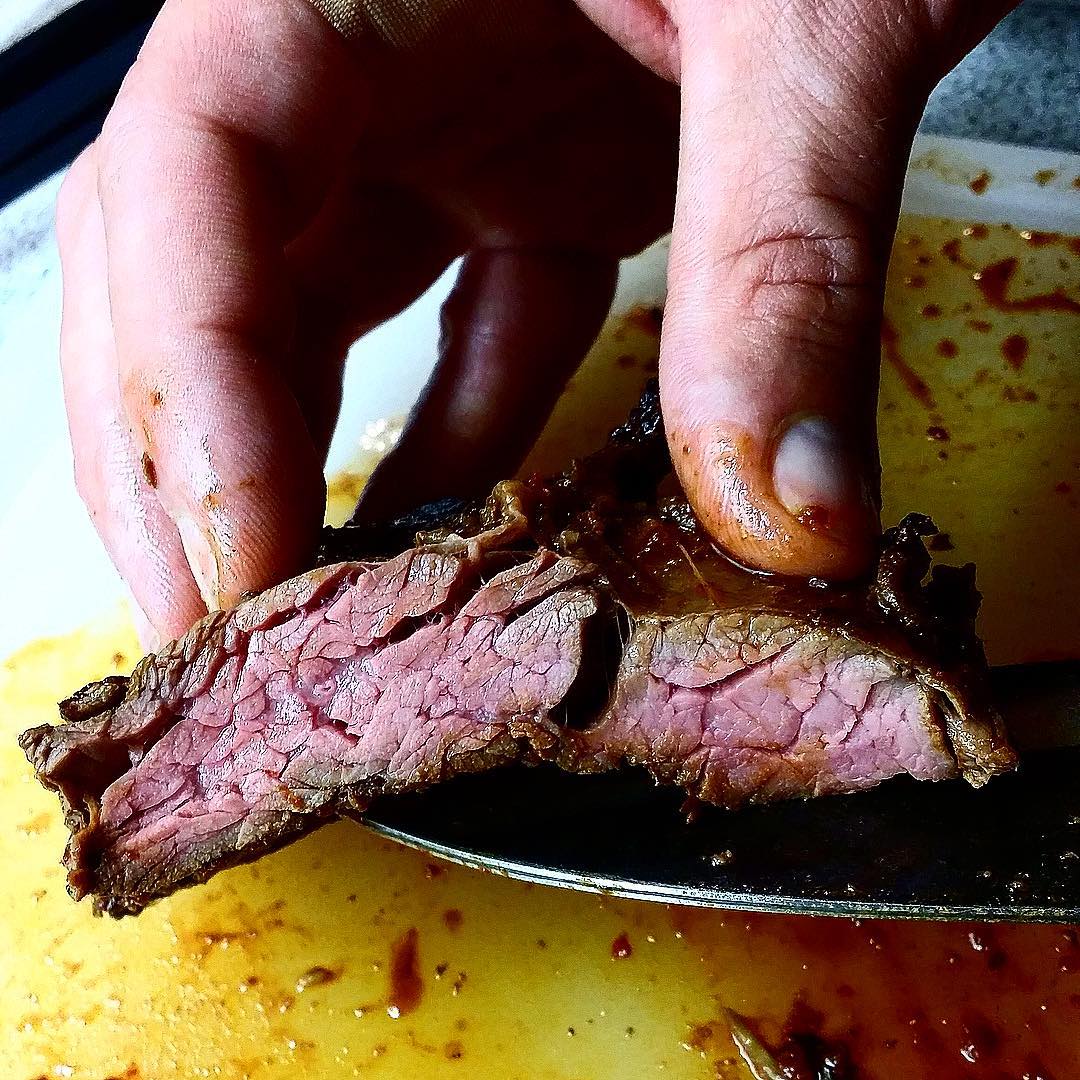
Who’s pretty now? Photo credit: Malou Rotvel Pagh, Klidmoster.dk
With such an important choice out of the way, we’ll need to contemplate some equally important issues in the shape of marinade and cooking procedures, and you will probably be happy to know that whichever of the above three wonderful choices you go with, subsequent procedures will be identical.
The benefits and inner workings of a Carne Asada marinade
Can we spend a few thousand words talking about marinades and chemistry? Of course we can! After all, few things are more important to traditional Mexican meat dishes than marinades, so it’s pretty vital we understand how a marinade works, how it’s put together and how long we need to marinade our beef. A good marinade, you see, is crucial, nay mission critical, to perfect Carne Asada – and many other Mexican meat dishes for that matter. Why? To impart flavor, obviously, but other than that a marinade serves other important purposes… though not necessarily the ones you may think…
The purposes of a marinade: it’s not to tenderize
A lot of home cooks (professionals, too, for that matter) wrongfully assume we use a marinade to tenderize meat, but nothing, really, could be further from the truth as we will soon see in detail below. For now, let’s repeat one more time: a marinade does not tenderize meat! It does, however, have several other beneficial properties.
A marinade, essentially, serves four different purposes: First and most importantly, it imparts flavor! Secondly, as a nice added bonus, it facilitates browning and adds an extra layer of flavor by caramelizing onto the surface of the meat during cooking. Thirdly and fourthly, though, it doesn’t so much tenderize meat as it serves to retain moisture and enhance the texture of meats.
A tough piece of meat will not become magically tender from submersion in a marinade, but a tasty piece of meat will if treated with a correctly formulated marinade seem not only tastier and juicier but also different in texture which, to the mind, translates as more tender and desirable. That’s culinary magic at work!
To work its magic, though, a marinade must contain a number of different ingredients, each serving their own specific purpose. Let’s therefore, quickly-ish, have a look at the four key characteristics of a marinade.
Marinade basics I: A marinade imparts flavor through its ingredients
The main purpose of a marinade is to impart flavor. Flavors come in a number of ways and the flavors of a marinade can be either simple or various shades of complicated depending on the character and number of spices, herbs and what not you decide to use, but the basic concept remains the same: submerging a meat in flavors suspended in a liquid for hours on end helps impart new flavors not inherently found in meat.

Here are a few common ingredients for Mexican marinades. In this case, the beer is intended merely for marinating the dry throat of the chef.
Again, a perfect Carne Asada marinade means different things to different people. Since I’m a sentimental fool and a huge fan of food memories, my idea of perfect Carne Asada is something as close to my memory of the original brush with the dish as humanly possible. For the purpose of this post, that translates into finding the right kind of meat and smearing it in a marinade that resembles my precious memories: intensely spicy, perplexingly earthy, herbaceous and at one time umami rich and pungent yet surprisingly fruity with an acidic bite and a persistent, pleasant heat. We will go through the flavors of a Carne Asada marinade at a later stage (spoiler alert: ours will be neither simple nor dull!), for now let’s have a closer look at the more magical chemical properties of a marinade.
Marinade basics II: A marinade helps facilitate browning
The primary function of a marinade, as we’ve just established, is to add flavor. A marinated piece of meat cooks up tastier than a non-marinated piece of meat. But not for the reasons you may think. A marinated piece of meat turns flavorful not because the marinade penetrates the meat, seasoning it from the inside, but rather because it clings to the surface of the meat during the cooking process and aids the meat in browning and cooking up extra crispy.
When the surface of a piece of meat is hit with a blast of high heat, a beautiful process known as the Maillard Reaction kicks in during which (very simply put), the natural sugars, proteins and enzymes found on the surface of the meat start to caramelize and brown, giving up a ton of flavor and aroma in the process. The Maillard Reaction and the flavors it brings are basically the sole reason we sear meat over high heat (as opposed to simply boiling, braising or slow-cooking) and a marinade really helps supercharge this process:
When hit with a searing blast of heat, the marinade ingredients still clinging to the meat will also caramelize onto the surface of the meat and not only help increase browning but create an additional layer of crust and flavors. In this way, a marinated piece of meat simply cooks up crisper, browner and more flavorful than non-marinated meat. This holds especially true for marinades containing sugars as sugars act as a natural caramelization agent.
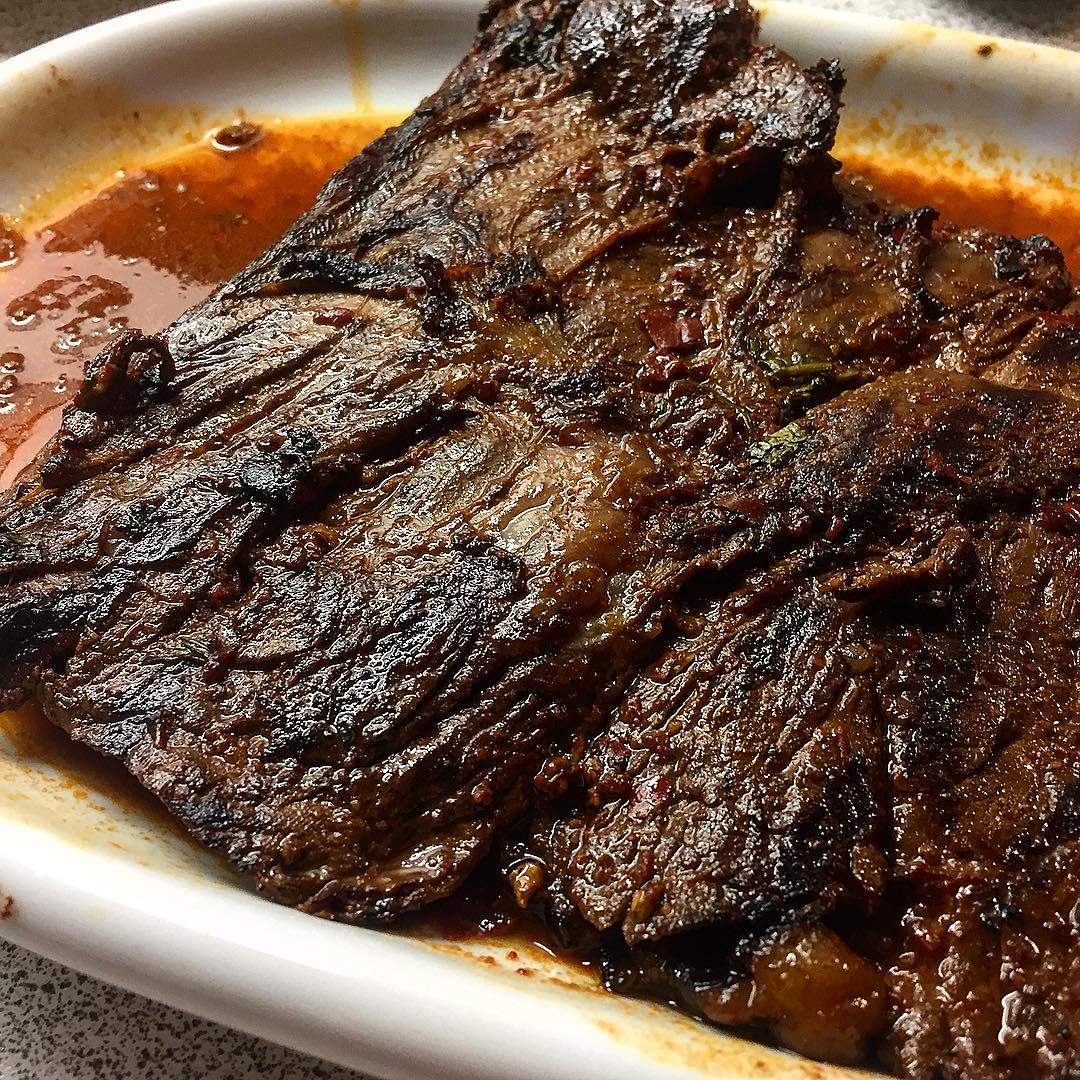
Perfectly and evenly browned Carne that’s sugar at work, people. Oh sugar, to think that people were once afraid of you…
This, in its own, is pretty much enough to consider a marinade for your next grilling project. But wait, there’s much, much more!
Marinade basics III: A salty marinade helps retain moisture during cooking
Ever noticed that a marinated piece of meat sometimes cooks up juicier than non-marinated meat? Ever wondered why? Well, another popular marinade misconception is that marinades penetrate meats, spreading flavor and juiciness evenly throughout the meat. This, however is certainly not always (as in basically never) the case. While marinades do add a ton of flavor to the surface of a piece of meat, in most cases they do close to nothing to the interior of the meat.
Whether or not a marinade will penetrate a piece of meat to any noteworthy extend relies heavily on the composition of the marinade. The main components of a marinade, spices, oils and liquids, on their own achieve very little in terms of penetration and accordingly, most marinades only soak a few millimeters or so into the surface of meat. However, given a little chemical help in the shape of heavy dose of NaCl (that’s salt, by the way, before anyone starts panicking!) the marinade – well the salty bits, anyway – may penetrate quite a bit deeper (you there in the back, stop giggling!) and add not only flavor but also desirable side effects along the way.
To understand how salt can help improve a marinade, we must look to the somewhat related process of brining in which meat is submerged in a salty, flavored liquid to impart flavor and help the meat stay juicy during cooking. What happens when submerging meat in a brine, basically speaking, is that the salt breaks down the cell walls of the meat, causing them, through the wonderfully complex process of osmosis, to draw in liquid and flavor from the brine. The absorbed liquid, subsequently helps the meat cook up more juicy.
While not exactly a liquid, we can mimic many of the positive effects of a brine in a marinade simply by upping the level of salinity in our marinade through the addition of salt (duh!) or a combination of similarly salty ingredients like soy, fish sauce or Worcestershire sauce. The simple addition of salt to a marinade will help break down cell walls and muscle fibers, essentially allowing the salt to penetrate further into the meat, adding more flavor but more importantly helping the meat retain moisture and juiciness during the cooking process.
Awesome as this sounds, we must bear in mind however, that this tricks requires a heavy amount of salt in the marinade and that even so the penetration of the marinade is still limited. While the salt itself will soak deeply into the meat, seasoning it and helping retain moisture, it will only carry with it a small amount of water-soluble flavors. Most bulkier flavor components like spices, oils and herbs are simply put far too molecularly dense to pass very far through the molecular mesh that is meat fibers and are stuck clinging to the surface of the meat.
So, while adding salt to a marinade will not achieve full saturation, it will however drastically improve the texture and juiciness of the beef while facilitating a slightly deeper penetration of flavors and since we’re dealing with a flat piece of meat in this case, a little extra really does go a long way in terms of both flavor and texture.
Marinade basics IV: An acidic marinade adds flavor and alters the texture of meat
So, we’ve got our spice, we’ve got our sugar and our salt. In other words, we’ve got all the richness we need. Now we need something to balance it all out.
Acidity is an important player in many marinades for two very good reasons: first of all, it adds an important element of flavor on its own and, secondly, through its very acidity it serves to cut the richness and in some cases fattiness of the meat involved, creating a more complex, unique and balanced product. Acidity does not, however, do what many people claim. Acidity in a marinade does not serve to induce or enhance tenderness. No matter what anybody tells you. Repeat after me, class: a marinade does not tenderise! It is added mainly for flavor!
That being said, though, acidity does have one key side effect when used in a marinate that kinda, sorta, in some cases translates into additional tenderness: Acidity in a marinade alters the texture of meats by denaturing the proteins of the meat. If you’ve ever prepared Ceviche, you know the deal. Once introduced to a heavily acidic environment, fish or seafood will change color and texture as if magically cooked without the miracle of fire. That’s denaturing at work, right there! The acidic marinade does not actually cook the proteins, it alters their texture – and we can use this process to our advantage when working with other, larger pieces of meat if we carefully dose and time our acidic attack.
Think of meat proteins as tightly wound bands stuck together in a mesh pattern. Upon introduction to the marinade, the acidic components will at first loosen these bands, making the surface of the meat susceptible to penetration from water and water-soluble flavors, creating a sort of illusion of tenderness that in reality translates to mushiness more than anything. Realities aside, the effect is desirable as perception is the name of the game here and the mushiness will help especially leaner pieces of meat like flank and flap feel more tender to the chew.
Once again, while desirable, the effect is mainly isolated to the surface of the meat and the few millimeters or so that the marinade will actually penetrate. So expect great flavors and a little extra give from an acid bath, but not tenderness through and through. And more importantly, expect the effects to be temporary! Given enough time in a highly acidic environment, meat fibers will recalibrate and reform bands that are actually tighter than they were before, efficiently squeezing out water in the process, essentially toughening the meat rather than tenderizing.
To prevent such undesirable results, we will need a carefully engineered and not too acidic marinade that will work to our advantage – and we will need to carefully consider how long to marinade our beef!
How long should I marinate beef? Longer isn’t better!
That is one of the most frequently asked questions in modern cuisine and the perhaps somewhat surprising answer is shorter than you might think! The sad fact of the matter is that marinating a piece of meat for extended periods of time like a day or more have no noteworthy proven positive effects at all in terms of flavor and texture. Au contraire, mes amis, it will, in a best case scenario have no noticeable effects at all… In a worst case scenario, however, it may lead to catastrophic results!
Many food geeks before me have done some very geeky and exciting experiments regarding various types and cuts of meats versus time spent in marinade, so for the purpose of this article, I will stick to summing up their efforts along with observations of my own: It goes to reason that time spent in marinate relies proportionally on the size of the meat.
For a thin cut like flank, skirt or flap meat, as little as a few hours in a marinade will make a considerable difference but the marinade will need upwards of 3-6 hours to really work its magic in terms of textural alterations and moisture retention. “Only this and nothing more” in the dark, immortal words of Edgar Allan Poe. From thereon, you’ve got another few hours or so before things start heading downhill – faster than you might think!

How long should I marinate meat? As a general rule of thumb, I usually say no shorter than about the time it takes for you to wind away an afternoon with a friend, a six pack and some snacks… And less time than it takes for you to get too sloshed to operate the grill.
Really? That’s it?! You ask. Yes, really, friends, six hours is more than enough and we have the research to prove it! Extensive experiments by the likes of J Kenji Lopez-Alt, for example, have shown that longer time spend in marinade does not necessarily produce better results. Pieces of skirt steak marinated for lengthy periods of time showed no discernable improvement in taste from pieces marinated for three to six hours. They did, however, show a rapid deterioration in texture and mouthfeel as time went on as the acidic ingredients in the marinade started wreaking havoc on the meat.
And therein lies the important lesson of the day: if you plan to cook Carne Asada, using a salty and acidic marinade, as we are about to do, allow at least three and upwards of six hours of marinating time. You could go slightly longer if your busy schedule dictates but expect no additional improvements from extra time spent in that sea of flavor we call a marinade. Also keep in mind that eventually acidic ingredients found in the marinade will start working against you, turning those wonderfully structured meat fibers tough and dry. For a highly acidic marinade such as the one we’re about to explore, I’d allow for no more than 12 hours of marinating time, less our efforts be in vain.
How to make the perfect Carne Asada marinade
Having spoken so much about the theory and chemistry of marinades, how do we put them into practice? If our lengthy chemistry lessons above have taught us anything it is that a marinade should contain not only an explosion of flavor but also enough sugar, salt and acidity to fulfil all secondary purposes of a marinade. Luckily, our perfect Carne Asada marinade will contains all of those: depth from of flavor from selection of hot peppers and spices, turbo-charged caramelization properties thanks to sugars, boosted salinity from a number of sources to help retain moisture during cooking and a superbly balanced acidity for extra flavor and textural purposes.
Now, let us reward your patience and have a look at each in succession.
Flavor: With this being a Mexican dish, it should come as no surprise to anyone that the main flavors of Carne Asada come from chilies. For those following the series or browsing other Mexican-inspired recipes on the site, it should also come as no surprise that we’re using a selection of hot peppers to form the base of our marinade. In this particular case, we will base our marinade on a mix of Ancho and Guajillo chilies for an earthy, nutty and fruity base coupled with a whole Chipotle pepper for a quick burst of heat and a distinct whiff of smoke.
In case of the Ancho and Guajillo peppers, we will use dried pods (that we first toast and reconstitute in the marinade) for their sweetness and unique aromas of dried fruit, nuts and peculiar lightly smoked earthiness. For the Chipotle, however, I recommend we go for the canned varieties which have been smoked over wood and then packed in a uniquely spicy and vinegary concoction known as Adobo sauce: While whole, dried chipotles are readily available, the canned stuff pack much more flavor and character, especially when it comes to smokiness and heat – plus, the Adobo sauce adds whole new flavor elements of its own. By mixing dried and “fresh”, canned peppers, we essentially create a symphony of flavors, ranging from deeply earthy and nutty to intense, vibrant and fruity.
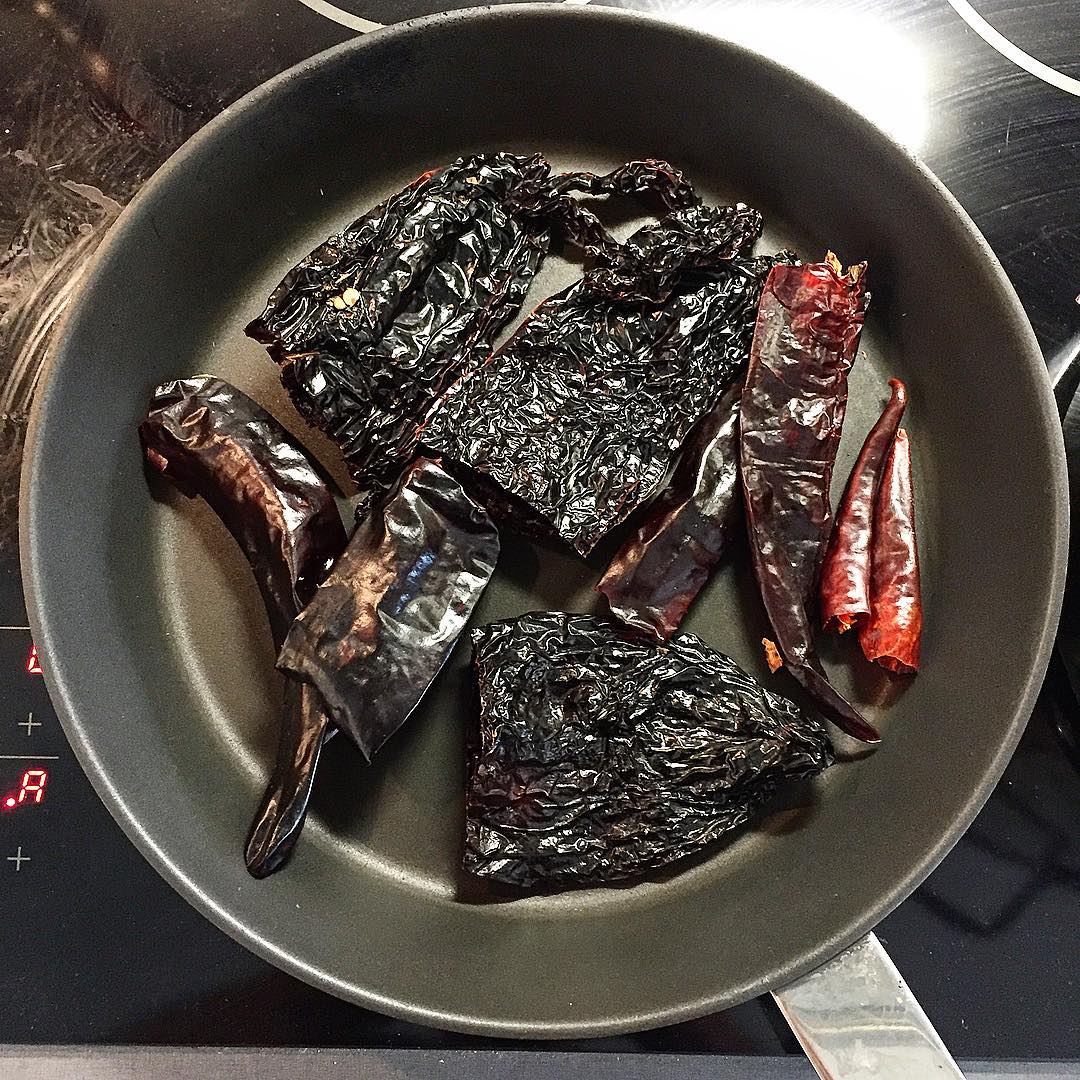
Pro tip: When working with dried chilies, always toast before using. Even in marinades . It releases a ton of extra flavors!
To further accent our chili symphony and add additional layers of flavor, we will employ the use of a heavy dose of two other well-known Latin American faces: Floral Mexican oregano and dusty cumin along with a hint of fragrant coriander to form our spice base. On the aromatics side, we will reach for a bit of garlic and a whole bunch of cilantro to create an all-round herbaceous flavor profile with a pungent and fragrant finish.
Turbo charged browning: Remember how we stated that the first primary purpose of a marinade is to flavor the surface of a meat and that sugar in particular helps in creating additional layers of flavor during cooking? Right, well, obviously our perfect Carne Asada marinade needs a pinch (well, more than a pinch, really) of sugar to achieve this goal. But which kind? Well, technically, we could use plain, white, refined sugar for the purpose, but other than getting the basic job done, refined sugar adds very little to the party in terms of flavor or zing. Since what we’re really after here is caramelization AND flavor, I propose using either an unrefined cane sugar product or why not go completely loco and use Agave Nectar instead, a liquid sweetener derived from the Agave Plant that is both authentic and flavorful.
Moreover, as opposed to granulated sugar, a liquid sweetener has the advantage of integrating more easily and evenly into a liquid marinade. In culinary terms, this translates into an even coating, a more uniform flavor and a completely even caramelization rather than partial.
By the way, if you’re worried about the meat burning from the sugars in the marinade, don’t. While it’s a fine line between caramelizing and burning when working with sugar-laden marinades, we’ve got an extra trick up our sleeves: To help us achieve better results and keep the meat from sticking or burning during the cooking process, we will add a healthy amount of oil to our marinade along with the sugar. And here you don’t need to worry much about type and character. As we are adding the oil primarily for practical reasons rather than flavor, you don’t have to use expensive oils here. The aromatic components of the oil would most likely be damaged from the high heat we’re about to release upon our unsuspecting piece of meat, creating undesirable off-flavors. No, friends, any neutral flavored oil will work wonders here as long as it’s a high-smoke-point oil like sunflower, corn or peanut oil that stands up well to scorching high heat.
Salt: In order to not only properly season and salt our beef but also help retain moisture during cooking, our marinade needs salt and lots of it. You could use straight up table salt for the purpose or take a walk on the wild side and add a little extra flavor and depth by adding salty umami-rich ingredients like soy sauce or fish sauce. You could even use the international favorite Worcestershire sauce, but on my palate, the quite unique flavor gets entirely too dominating.
Now, granted, neither soy nor fish sauce are probably very traditional Mexican ingredients, I’ll give you that, but they do add an extra depth of flavor without leaving a distinct Asian or fishy flavor. In short, they add a kick of that fabled and illusive fifth taste known as umami without screwing up the flavor balance in any apparent way. I’ve included both ingredients in the recipe below, but if you want to kick it traditional and old-school, you can simply replace the two with straight up salt or a combination of salt and a concentrated, well-seasoned beef stock.
Balanced acidity: With an intensely flavorful piece of beef and a host of spices, peppers and aromatics already in the mix, we’ll need a fair bit of acidity to cut through the richness of the other marinade ingredients, provide great complimentary flavors and break down the muscle fibers of the meat, making it, essentially, seem more tender. In this case, our main acidic ingredient will come in the shape of another Latin American favorite, freshly squeezed lime juice which will provide the intensely tart and acidic kick needed to cut the richness of the dish as well as denature the beef a bit.
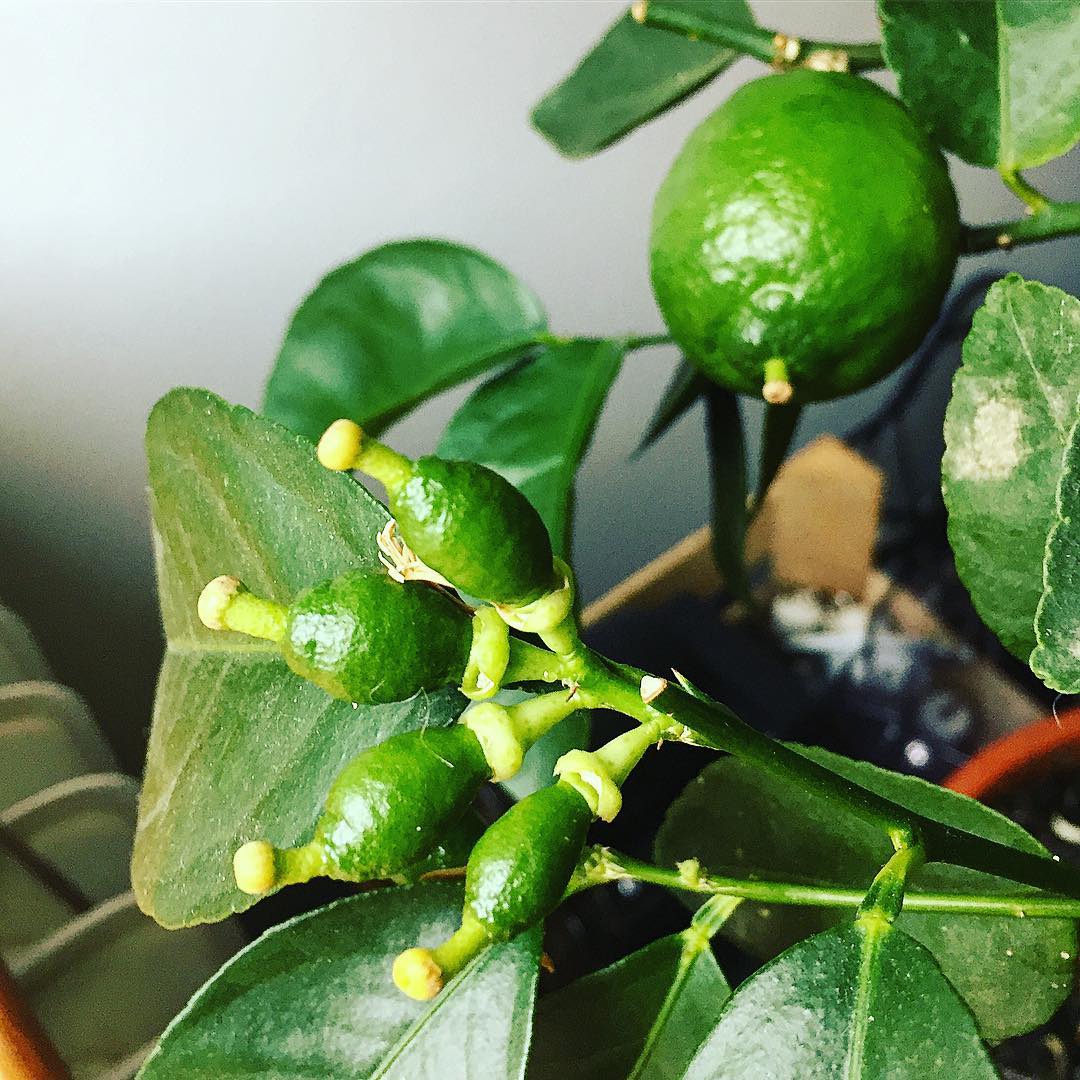
Acidity in the form of freshly squeezed lime juice is essential to Carne Asada marinade. Now, I’m not saying you should have your own lime tree for the purpose, but if you happened to have one…
Straight up lime juice is a bit tart, though, even for me, so in line with many classic Carne Asada recipes, we will mellow things up a bit by mixing in another exotic favorite: a bit of freshly squeezed orange juice which, along with a lighter, more subtle acidity also adds an extra bit of sweetness and tropical fruitiness.
How much is a bit of orange juice? Well, when I say a bit of orange juice, I mean it quite literally. While most Carne Asada marinades contain a combination of lime juice and orange juice, proportions vary greatly. Many are downright sweet with orange acting as the main player and lime a mere accent. Me, I personally absolutely adore an acidic punch so you will find mine on quite the sour side of the spectrum. If you prefer a more subtle acidity and enjoy sweetness, simply cut down on the lime and use a little more orange instead.
Perfect Carne Asada Recipe – Mexican Grilled Beef for Tacos or Burritos
Alright, enough talk already! Thanks for bearing with this rambling old fool. Let’s see now exactly how to make the perfect authentic Mexican Carne Asada for tacos, burritos… or simply for enjoying on it’s own.
Beginner's Guide to Mexican Food IV: Carne Asada - Mexican Grilled Beef
Ingredients
- 500 gram steak skirt, flank or flap meat
- 2 Ancho chilies
- 2 Guajillo chili
- 1 Chipotle chili canned, in adobo sauce
- 1 teaspoon adobo sauce from the canned Chipotle
- Juice of two limes
- Juice of half an orange
- 1 tablespoon soy sauce
- 1 tablespoon fish sauce
- 3 garlic cloves
- One bunch of cilantro as much as you see fit or omit altogether
- 2 teaspoons cumin
- 1 teaspoon Mexican oregano can substitute regular oregano
- 1 teaspoon coriander
- 2 tablespoons agave syrup
- 2 tablespoons oil
- 1 tablespoon salt
Instructions
-
Cut stems off the chilies, remove seed pods and sees.
-
In a dry pan set over medium heat, gently toast the chilies until warmed through, soft and fragrant.
-
Chop roasted chilies into smaller pieces and add to a food processor along with one Chipotle pepper, one teaspoon of adobo sauce and all other marinade ingredients except cilantro and garlic.
-
Blend marinade ingredients until completely smooth.
-
Coarsely chop cilantro, stems and all, and add to marinade along with finely minced garlic. Allow to rest for a few minutes.
-
Place meat in a large Ziploc bag and carefully pour in the marinade. Shake and knead bag to evenly distribute the marinade across the surface of the meat, forcing as much excess air as possible out in the process.
-
Seal bag and leave to marinade in the fridge for at least 3 but no more than 12 hours.
-
Remove meat from fridge at least half an hour prior to cooking.
-
Fire up your favorite grill, grill pan or cast iron skillet.
-
Remove any excess marinade, cilantro sprigs or large pieces of garlic from surface of the meat to avoid excess charring and burnt flavors.
-
Cook meat over high heat for about 2-5 minutes per side depending on thickness until well and thoroughly browned.
-
Remove meat from heat and let rest loosely covered for an additional 5-10 minutes.
-
At this point, the meat should have an internal temperature of about 52-55C (rare to medium rare) and yield easily to the touch of a finger yet spring back quickly when released.
-
Once well rested, slice beef thinly across the grain, pour over any accumulated juices and serve.
Recipe Notes
How you slice Carne Asada matters almost as much as how you cook it. For instructions on how to properly slice Carne Asada please see the paragraph below.
Charcoal grilling: How to cook Carne Asada – Like a Mexican Boss!
If there is any secret to cooking Carne Asada (other than our awesome spice blend and marinade), it is in the cooking and the cutting of the meat. The best Carne Asada I’ve ever had has been caramelized to a state of near charred on the outside, yet perfectly medium rare, juicy and incredibly tender on the inside.
Now, given a thin, elongated and fibrous piece of beef like skirt steak, that may not seem the easiest task in the world, but there’s a pretty simple trick to Carne Asada perfection and that trick is called: intense, steady, direct heat like that of the Seventh Layer of Hell! Ahem, I digress. Intense, steady, direct heat which in mere mortal terms usually translates into either a cast iron pan or a charcoal grill!
Basically, we need a heat source intense enough to quickly create an even and beautifully caramelized layer of crust on the outside of our steak. Theoretically, this could be achieved over time by just about any heat source, but we need said caramelization to happen within mere minutes so that the inside of the steak remains a beautiful (medium) rare, tender and juicy piece of work rather than a grey and dull bite of sadness. For a job like that, we really need to channel the powers of cast iron – or better yet, ye’ olde trusty charcoal grill.

Fire her up!
Granted, you could easily cook up Carne Asada in the comfort of your home kitchen using a screaming hot cast iron pan, but for perfect, authentic results you’d do best to venture outside and fire up your grill. Your charcoal grill, that is! Now, again gas would certainly get the job done, regular trusty briquettes, too, but for this very purpose I would suggest something I don’t normally do: lump charcoal! Not fancy briquettes filled with all sorts of additives, binders or anything like that. No, sir (or madam!) Good, old-fashioned lump charcoal! We only need a few minutes of searing, intense heat to get the job done and in this very case, charcoal plays the part perfectly as they burn hot, fast and clean, giving off the intense heat needed to caramelize the surface of the meat in minutes while imparting a natural, smoky charred flavor in the process.
Is firing up the grill for a couple of minutes of grilling a little overkill? Well, sure… Should you let lack of a charcoal grill keep you from preparing this insanely tasty piece of authentic Mexican cuisine? No, of course not! As I said, you can easily prepare this dish in the comfort of your home kitchen using a cast iron pan, or outside on your trusty propane-fueled Weber… A screaming hot charcoal grill just gives up a little more flavor, is all. And isn’t flavor what it’s all about?
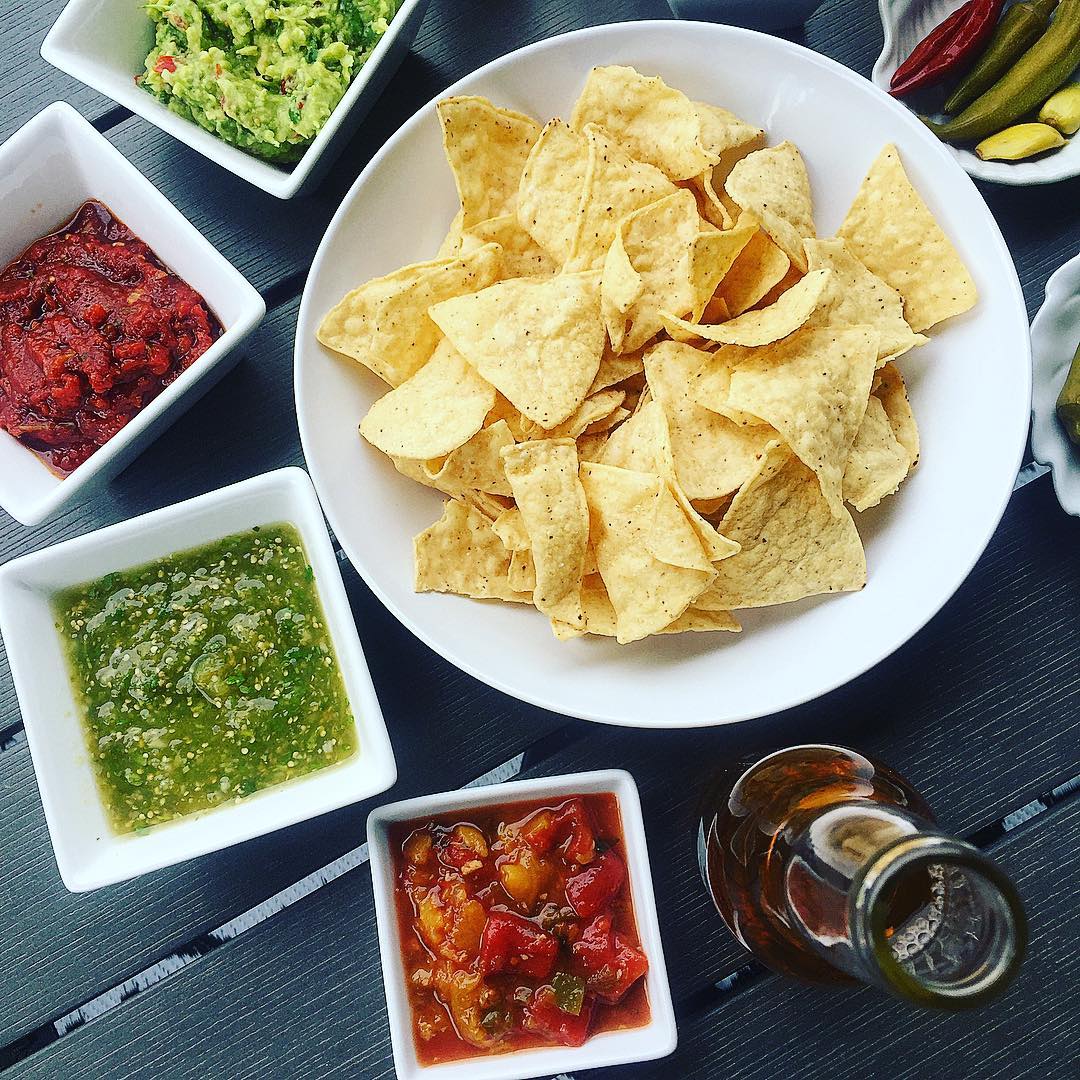
If you’re outside firing up the grill anyway, why not make a party out of it. Mexican food is supposed to be fun!
Besides, the meat needs to rest a bit before slicing, so why not make use of that residual heat to cook some sides, heat up some corn tortillas or what have you. Add a Corona or two throughout the process and before you know it, you have your own Mexican street party going on!
One last thing: How to properly slice Carne Asada
Congratulation, you’re now in posession of a big, flat, perfectly grilled piece of Carne Asada. One of the world’s most mouth-watering hunks of cow. There is a world of culinary opportunities at your fingertips but before we go any further, you’ll need two final yet absolutely vital pieces of information:
1) Carne Asada must be sliced prior to serving
2) Slicing Carne Asada the wrong way completely destroys an otherwise perfect piece of beef!
No, I’m not kidding here. Whether you chose to use skirt steak, flank steak or even flap meat for your Carne Asada needs, your job as a home chef doesn’t stop with the grilling of the meat. In fact, the proper slicing of Carne Asada is every bit as important as the cooking process – if not more. Many a perfectly cooked helping of Carne Asada has been killed by bad knife skills…
Why is cutting so important? Well, whether your Carne Asada is made from flank, skirt or flap, it will come off the grill textural challenged. All three cuts of beef contain long, sturdy fibers that are easily recognizable on the surface of the meat both before and after cooking. Your final job as a chef, before you can kick back and call it a taco party is to locate these fibers and taking heed of their orientation before picking up the knife. If you want juicy, tender Carne Asada, it is absolutely vital that you slice the beef across the grain, effectively separating those long, tough fibers to achieve tenderness! Believe you me, separating those fibers is a lot easier with a sharp knife than it is with your teeth and if you cut things the wrong way, you’ll be chewing your Carne Asada for longer periods of time than you spent reading this guide.
Want smaller chunks? Slice then chop! Obviously, nobody wants 10, 15 or even 20 centimetre long pieces of steak in their tacos or burritos and you can chop your steak into shorter manageable pieces with the grain after slicing if you so desire, but once it comes to slicing thinly, you’ll need to turn the beef and cut those fibers lest all your efforts till now be in vain!
Rice, burritos or tacos: How to serve Carne Asada
Carne Asada is delicious on its own served, for example, with a side of Spanish rice and/or beans. If you want to get a little saucy with your beef (and you should) you honestly couldn’t do much better than with out perfect Salsa Roja or Salsa Verde recipes to top things up. If you ask me, however, Carne Asada works best as an ingredient for other traditional Mexican dishes such as burritos or my personal favorite Carne Asada Tacos…
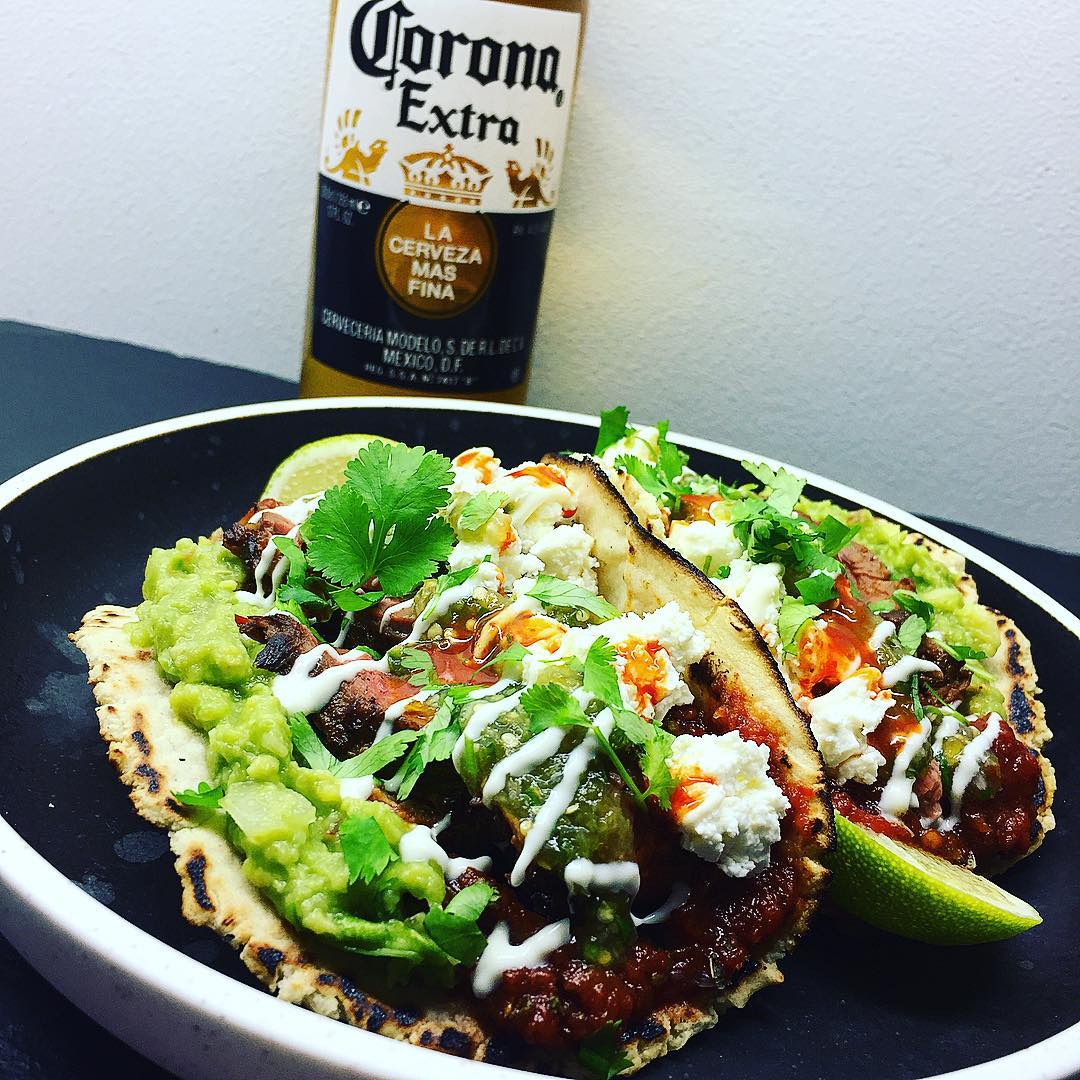
Homemade Carne Asada Tacos, one of my favorite foods in the entire world! Shown here meticulously plated by Malou. Don’t worry, they’re on the blog, too!
But that’s another post… In fact, it’s our next post in the series and we’ll even throw in a recipe for homemade corn tortillas… Stay tuned!
Pingback: Huevos Rancheros - Ultimativ Mexicansk morgenmad - Gastromand.dk
Pingback: Asada Meat Explained - Your Guide to Mexican Cuisine